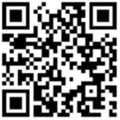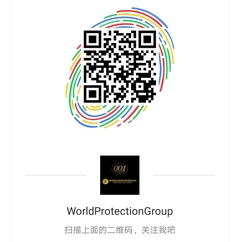Harnessing Mythical Archetypes to Foster Modern Innovation
Building upon the foundational idea explored in Unlocking Power: How Mythical Concepts Inspire Modern Rewards, this article delves into how ancient archetypes can serve as potent drivers of contemporary innovation. Mythology’s timeless symbols and narratives not only inspire individual creativity but also shape organizational cultures and technological designs, unlocking new frontiers of power and progress.
1. Introduction: From Power to Innovation—Evolving the Role of Mythical Archetypes
Mythical archetypes have traditionally represented sources of divine power, heroism, and cosmic order. In ancient stories, figures like Zeus, Odin, or Osiris embodied authority and control over natural forces. Today, these archetypes are being reinterpreted as mental models that fuel creative problem-solving and innovation. The transition from viewing myth as a source of divine rewards to a toolkit for future-facing development signifies a shift in how we harness collective symbolism for technological and social advancement.
- Decoding Mythical Archetypes as Drivers of Creative Thinking
- Archetypes as Frameworks for Organizational Culture and Leadership
- Beyond Rewards: Archetypes in Technology and User Experience Design
- The Intersection of Mythical Archetypes and Sustainable Innovation
- Challenges and Ethical Considerations in Using Mythical Archetypes for Innovation
- From Power to Future: Reconnecting Mythical Archetypes with the Parent Theme
2. Decoding Mythical Archetypes as Drivers of Creative Thinking
Mythical archetypes serve as powerful mental models that influence how individuals and organizations approach complex problems. Carl Jung’s theory of archetypes suggests that these symbols are embedded in our collective unconscious, guiding perceptions and behaviors. In modern contexts, archetypes like the Hero, the Mentor, or the Trickster inspire innovative thinking by providing familiar narratives that foster risk-taking and resilience.
For example, the Hero’s archetype has been adapted in startup culture, encouraging entrepreneurs to pursue bold ventures despite uncertainty. Apple’s branding often echoes the Rebel archetype—challenging norms and redefining user expectations—leading to groundbreaking products like the iPhone. Similarly, the archetype of the Creator fuels design thinking, prompting teams to innovate with new materials, interfaces, and experiences.
Case Studies of Archetype Inspiration
| Archetype | Application | Example |
|---|---|---|
| Hero | Encourages risk-taking and resilience in innovation teams | Tesla’s founder Elon Musk embodies the Hero archetype, pushing the boundaries of electric vehicles and space exploration |
| Mentor | Guides and supports creative development | Google’s leadership fosters a culture of continuous learning and experimentation, acting as a Mentor archetype |
| Trickster | Encourages disruptive ideas and unconventional approaches | The viral success of meme-driven marketing campaigns often reflects Trickster archetypes disrupting traditional advertising |
“Archetypes act as the subconscious blueprint of innovation, providing familiar narratives that inspire bold and transformative ideas.”
3. Archetypes as Frameworks for Organizational Culture and Leadership
Embedding mythic archetypes into corporate values creates a fertile environment for innovation. Companies like Nike and Disney leverage archetypal themes—such as the Hero’s journey or the Creator’s vision—to cultivate cultures that encourage experimentation and resilience. These narratives foster a shared identity, motivating teams to pursue breakthrough solutions amidst challenges.
Leadership models inspired by archetypes also shape how organizations inspire and guide their teams. For instance, transformational leaders often embody the Sage archetype—wisdom and insight—driving strategic innovation and fostering a learning culture. Conversely, the Explorer archetype motivates organizations to venture into uncharted territories, embracing change and uncertainty as catalysts for growth.
Cultivating a Myth-Inspired Environment
- Defining core values with archetypal themes to align behaviors and decision-making
- Encouraging storytelling that reinforces mythic narratives of innovation and resilience
- Implementing leadership development programs rooted in archetypal roles to inspire diverse thinking
“A myth-inspired organization recognizes that stories and symbols are not just cultural artifacts but active catalysts for innovation.”
4. Beyond Rewards: Archetypes in Technology and User Experience Design
In the digital realm, archetypal narratives significantly influence user interface (UI) and user experience (UX) design. By leveraging familiar mythic themes, designers create engaging, intuitive environments that resonate deeply with users. For example, virtual assistants often adopt the Guide archetype—an empathetic, knowledgeable companion—making interactions smoother and more humanlike.
Moreover, immersive virtual environments and AI-driven interactions draw on archetypes such as the Explorer or the Hero to craft compelling narratives that foster emotional engagement. Brands like Nike and Marvel utilize myth-inspired storytelling to develop memorable branding, creating a narrative ecosystem that sustains long-term customer loyalty.
Designing with Archetypal Narratives
- Creating engaging onboarding experiences that mirror the Hero’s journey of transformation
- Using archetypal symbols to guide visual design, fostering recognition and trust
- Developing brand stories that evoke archetypes like the Rebel or the Sage for emotional resonance
“Designs rooted in mythic archetypes tap into universal stories, creating intuitive experiences that deeply connect with users’ subconscious.”
5. The Intersection of Mythical Archetypes and Sustainable Innovation
Addressing ecological challenges requires innovative solutions grounded in archetypal themes of renewal, balance, and harmony. Mythic stories of rebirth—such as the Phoenix—serve as powerful metaphors for sustainable practices that emphasize regeneration and resilience.
Organizations are increasingly adopting archetypal narratives to foster collective responsibility. For instance, Patagonia’s branding draws on the Caregiver archetype, emphasizing stewardship of the environment. These stories inspire consumers and stakeholders to participate in sustainability initiatives, transforming collective action into a mythic journey of renewal.
Case Examples of Myth-Inspired Sustainability
- The Eden Project in the UK, which symbolizes renewal and ecological harmony
- LEGO’s sustainability initiatives driven by the Creator archetype—innovating eco-friendly materials
- The UN’s Sustainable Development Goals, often framed through archetypal themes of hope and renewal
“Mythical archetypes provide a narrative framework that elevates sustainability from a technical challenge to a collective mythic quest for renewal.”
6. Challenges and Ethical Considerations in Using Mythical Archetypes for Innovation
While archetypes offer rich avenues for inspiration, their use must be handled with care. Cultural appropriation and misrepresentation pose significant risks, especially when symbols are extracted from contexts without respecting their origins. For example, commercializing sacred symbols from Indigenous or non-Western mythologies can lead to cultural insensitivity and backlash.
Balancing influence with authenticity requires a diverse and inclusive approach to storytelling. Incorporating multiple archetypal perspectives ensures that innovation does not reinforce stereotypes or reduce complex cultures into simplified symbols.
Furthermore, organizations should be vigilant about the potential for manipulation—using mythic symbols primarily as marketing tools rather than genuine sources of value—thus risking consumer mistrust. Transparency and respect for cultural significance are essential.
Guidelines for Ethical Use
- Engage with cultural experts and communities when incorporating symbols from diverse traditions
- Prioritize authentic storytelling over superficial symbolism
- Ensure that archetypal narratives promote respect, inclusivity, and social responsibility
“Harnessing mythic archetypes responsibly transforms symbols from superficial marketing tools into catalysts for genuine cultural and social progress.”
7. From Power to Future: Reconnecting Mythical Archetypes with the Parent Theme
Looking ahead, the potential of archetypes as sources of power is vast. By reinterpreting mythic symbols within the framework of innovation ecosystems, organizations can unlock new forms of collective strength. For instance, the archetype of the Sage can inspire data-driven decision-making, while the Explorer encourages ventures into emerging technologies like blockchain or quantum computing.
This reconnection emphasizes that the power inherent in mythic symbolism is not static but a dynamic catalyst for breakthroughs. As we integrate archetypal narratives into innovation strategies, we reinforce that myth-inspired power fuels the rewards of the future—whether in technological advancements, sustainable solutions, or social transformations.
Encouraging ongoing exploration of mythic symbolism ensures that innovation remains rooted in shared human stories, providing a rich wellspring of inspiration for generations to come.
“Harnessing ancient archetypes within modern innovation ecosystems transforms mythic power into a catalyst for sustainable and breakthrough rewards.”






Leave a Reply
Want to join the discussion?Feel free to contribute!